5 ways this spring garden wows with color
Brilliant bulbs – in every shade – make this spring garden sing with color
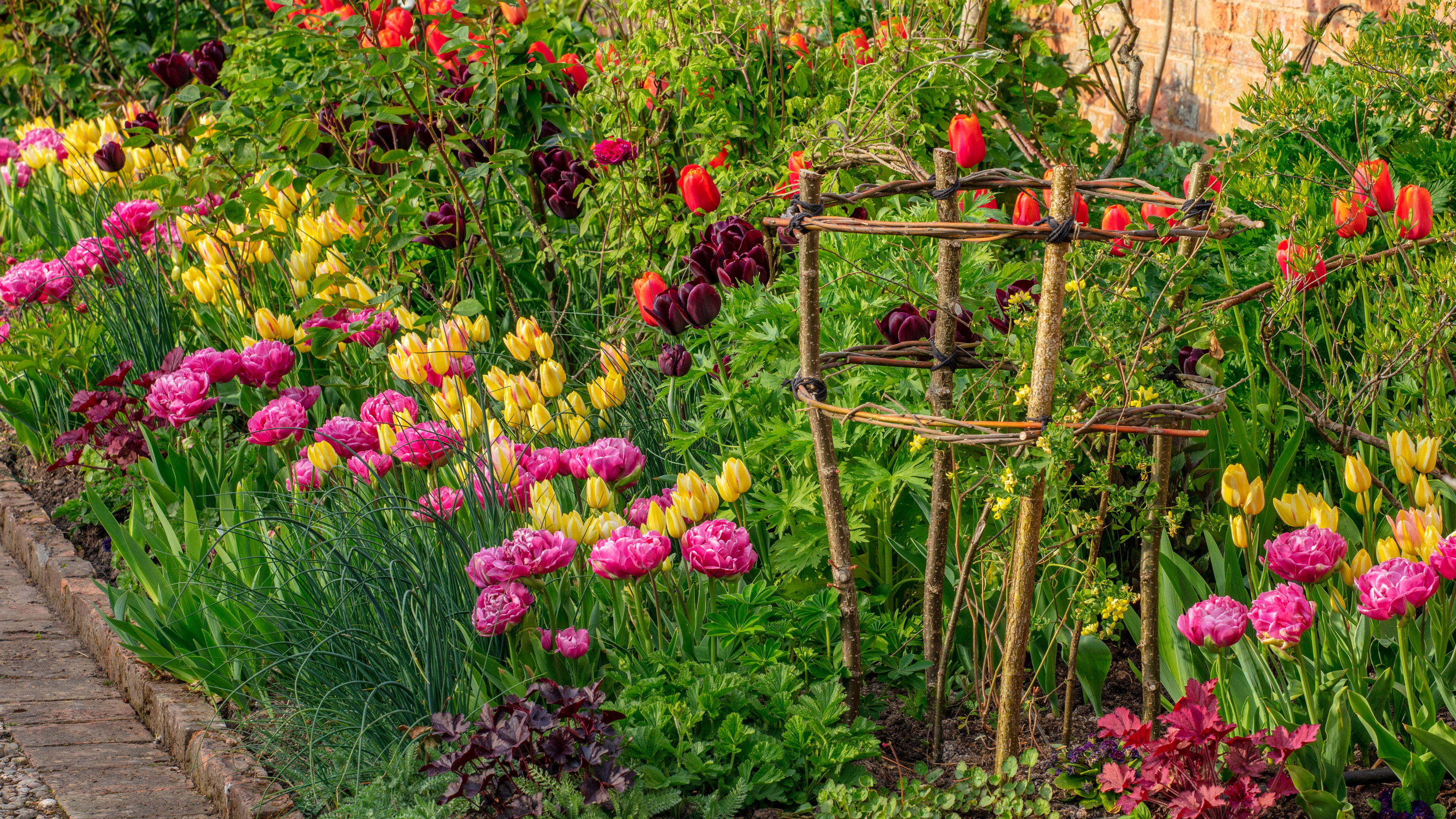

If you – like us – spend much of the weekend looking for inspiration and garden ideas, we have the perfect spot for you to head to.
Morton Hall – especially visited in spring – is a spring garden that wows with color. The early bulbs and synchronised tulip display is exceptional with a brilliance of thousands of blooms. It's all down to the months of meticulous planning and planting by owner Anne Olivieri.
Ever since the heady days of tulip mania in 17th-century Holland, tulips have maintained an allure. ‘They have not lost their power over people,’ explains Anne, whose vibrant and intricate 6,000-strong display draws visitors to the annual Tulip Festival held in the gardens of her Worcestershire home.
Almost 15 years ago, with the help of garden designer Charles Chesshire, Anne began the process of transforming the eight acres of parkland into seven diverse, but connected, seasonal gardens.
Here she shares how this spring garden wows with color...
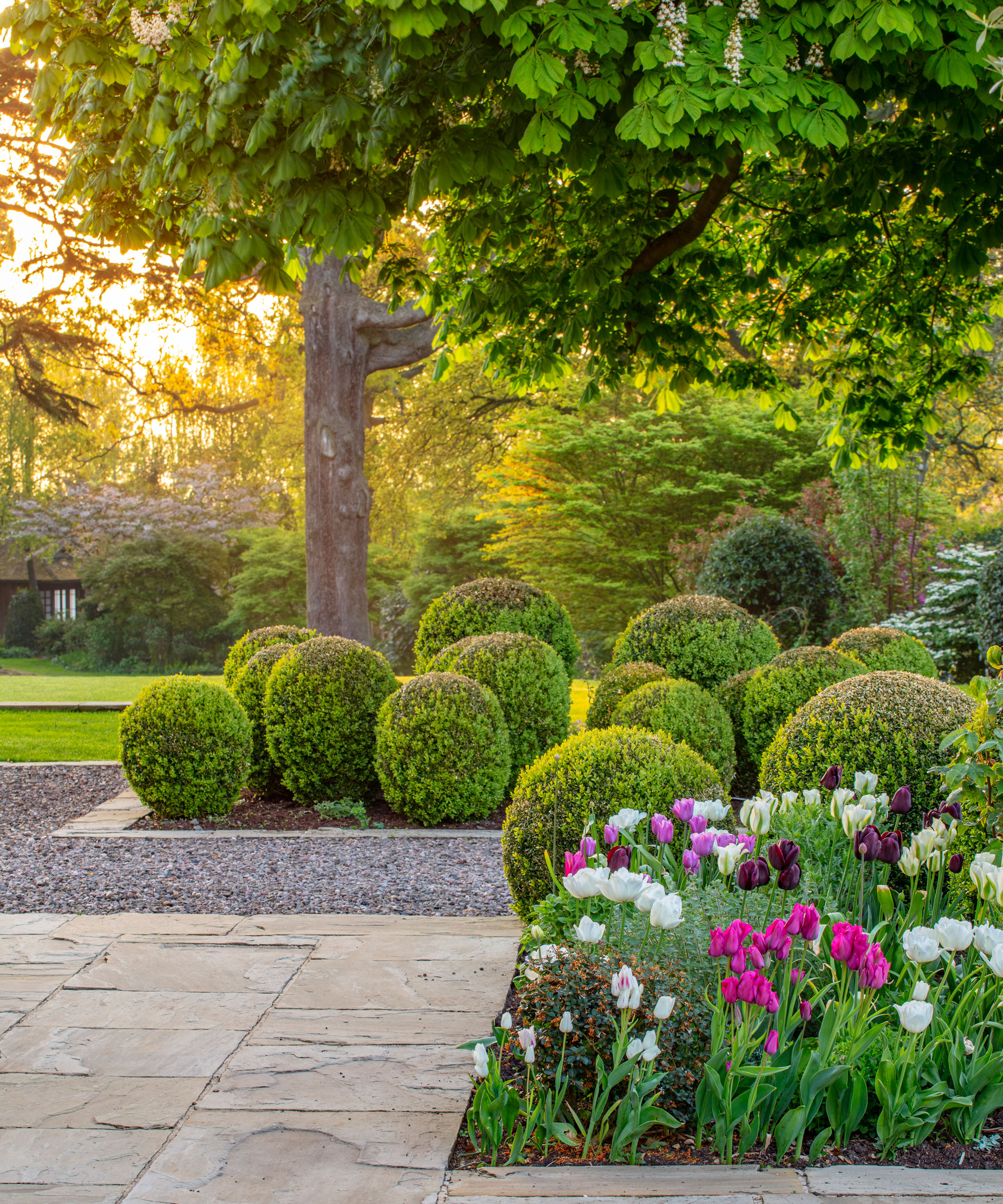
In the South Garden, the arrangement of tulips is heightened by a verdant backdrop of new spring foliage and expanse of lawn. Clean-clipped trees afford geometry and height in contrast to the softness of the border
1. Introduce early bulbs and flowering trees to a spring garden
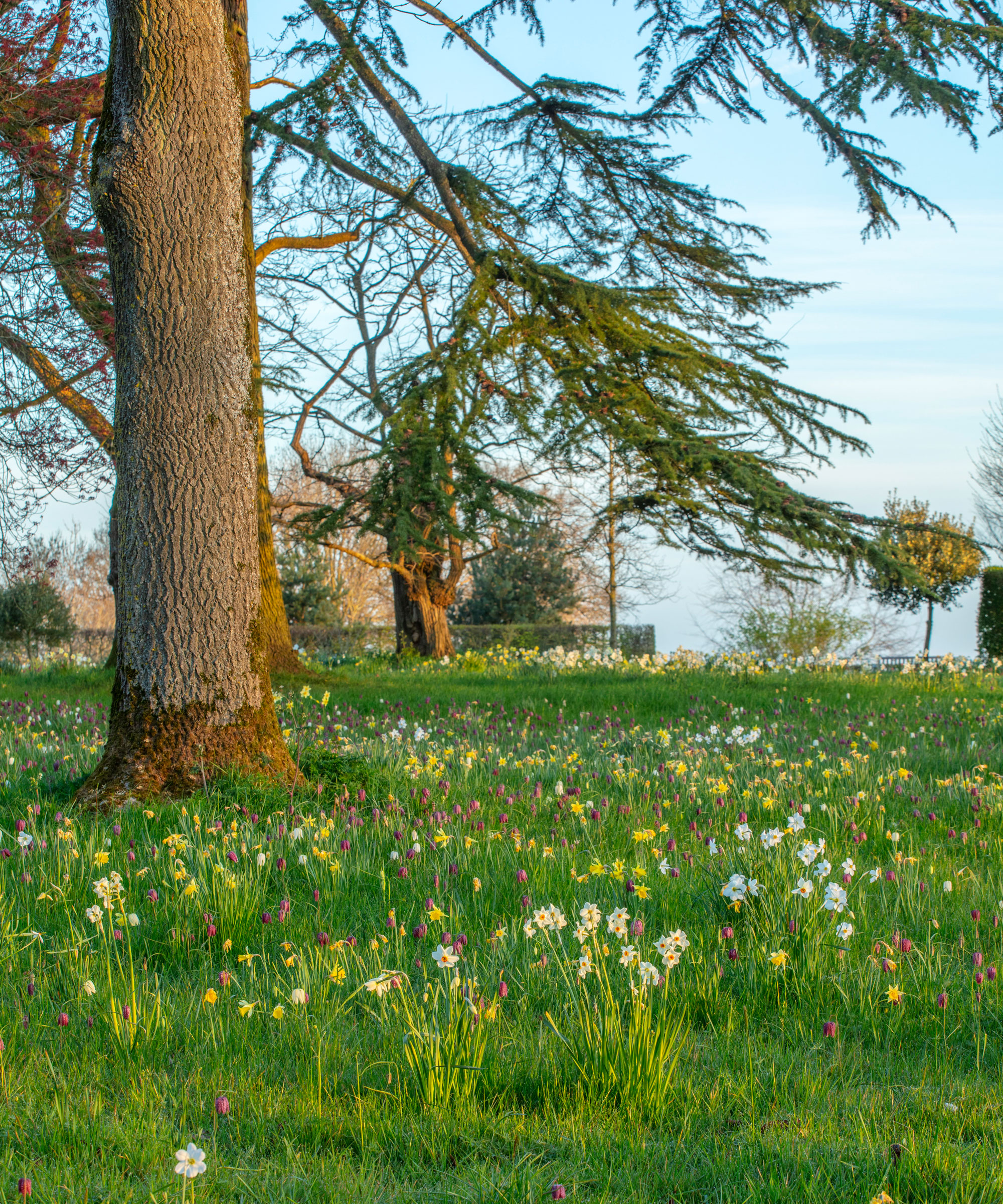
The ancient bulb meadow is filled with myriad bulbs. The spectacle begins in February, peaks in April with narcissi and fritillaria, while crocuses and camassias carry it right into May
'When my husband René and I viewed the property, in spring 2007, the parkland and meadow were awash with naturalised fritillaria and narcissi,’ says Anne.
She introduced snowdrops, scilla and camassias to intensify the display and extend the season. Clouds of Japanese flowering cherries complemented the delicate planting, softening the skyline of majestic estate trees.
South of the curving driveway, secreted by trees, lie two new gardens. A Japanese Stroll Garden, planted with flowering cherries, magnolias and tree peonies, incorporates reflective pools and a teahouse. Beyond lies the Rockery, its immense stone stairway clad with woodland vegetation.
Find more flower bed ideas in our dedicated feature.
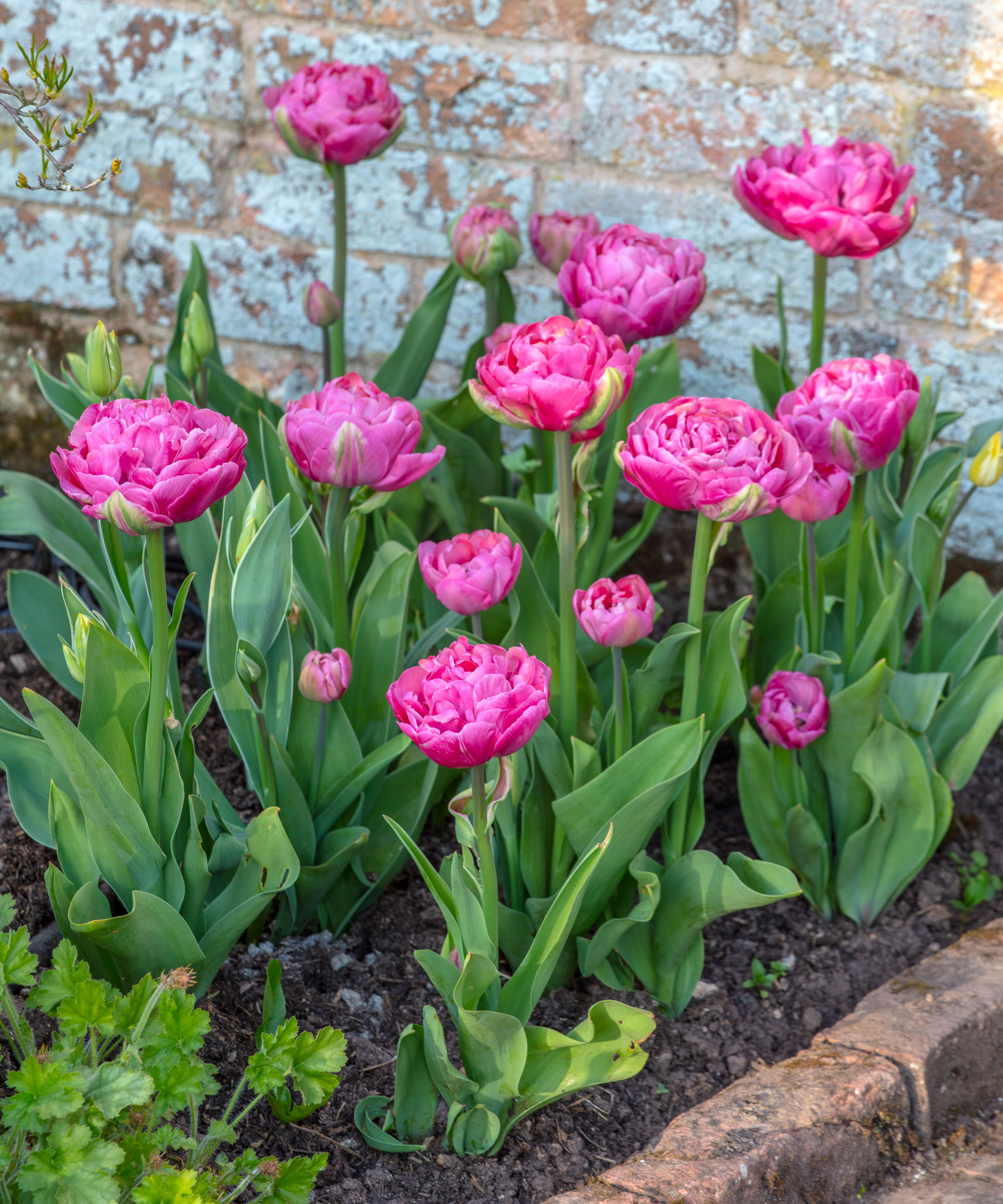
Tulipa ‘Amazing Grace’
2. Plant tulips in a spring garden border

Peony-flowered ‘Amazing Grace’, multi-headed yellow-maturing-pink ‘Antoinette’, late double ‘Black Hero’ and single late orange ‘Avignon’
In a sunny border, create ample space for tulips to flow in-between existing perennials and herbaceous plants. 'Tulips are versatile and scalable,' says Anne, 'Anyone can grow them, but density is key.' To do this, set out and repeat bulbs in their planting positions, in loosely grouped drifts of five to six. Intermingle a few bulbs where heights transition, avoid straight lines and isolated groups.
Using a trowel, plant 5cm deep, and cover, working from back to front, planting tall to short. Shallow planting eases lifting later. Dust finished planting area with hot chilli powder, two tablespoons per square meter, an effective squirrel deterrent not harmful to birds. Reapply as necessary, until shoots appear. Mulch with wood bark or compost, to improve drainage.
Post flowering, lift and compost all tulips. Large, healthy and fresh bulbs produce the best blooms.
3. Design a backdrop of lushness
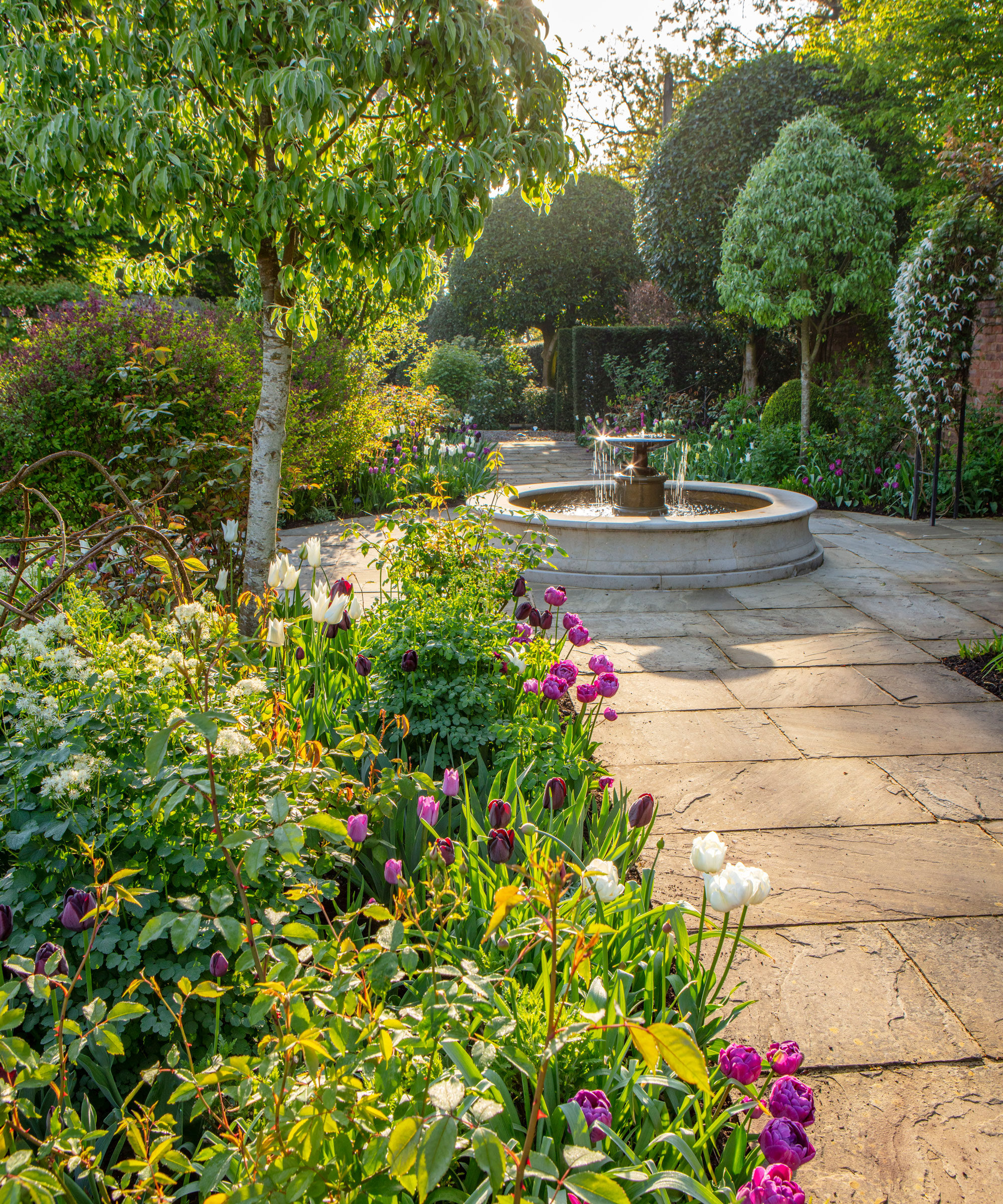
The lower fountain terrace is a focal point designed to draw you through the South Garden. The bronze fountain’s cascade has been finely tuned to create a veil of beaded droplets rather than amorphous lapping falls
The geometry of South Garden is softened by lush green borders, sprung with box spheres, and ringed with willow supporting emerging peonies and roses. Tulips flood and fill in the gaps, weaving in and out of the perennial shrubs, right down to the lower fountain terrace. The effect is artistic and the planting plan itself resembles an impressionist painting.
Anne explains the intricate design process. ‘Coordinates of the garden’s permanent plantings are recorded on a map. I overlay this with a matrix involving over 4,000 tulips, using 15 different cultivars. A different symbol denotes its color, height and form.’
Check out our garden edging ideas for more inspiration.
4 Group pots for an easy spring garden display
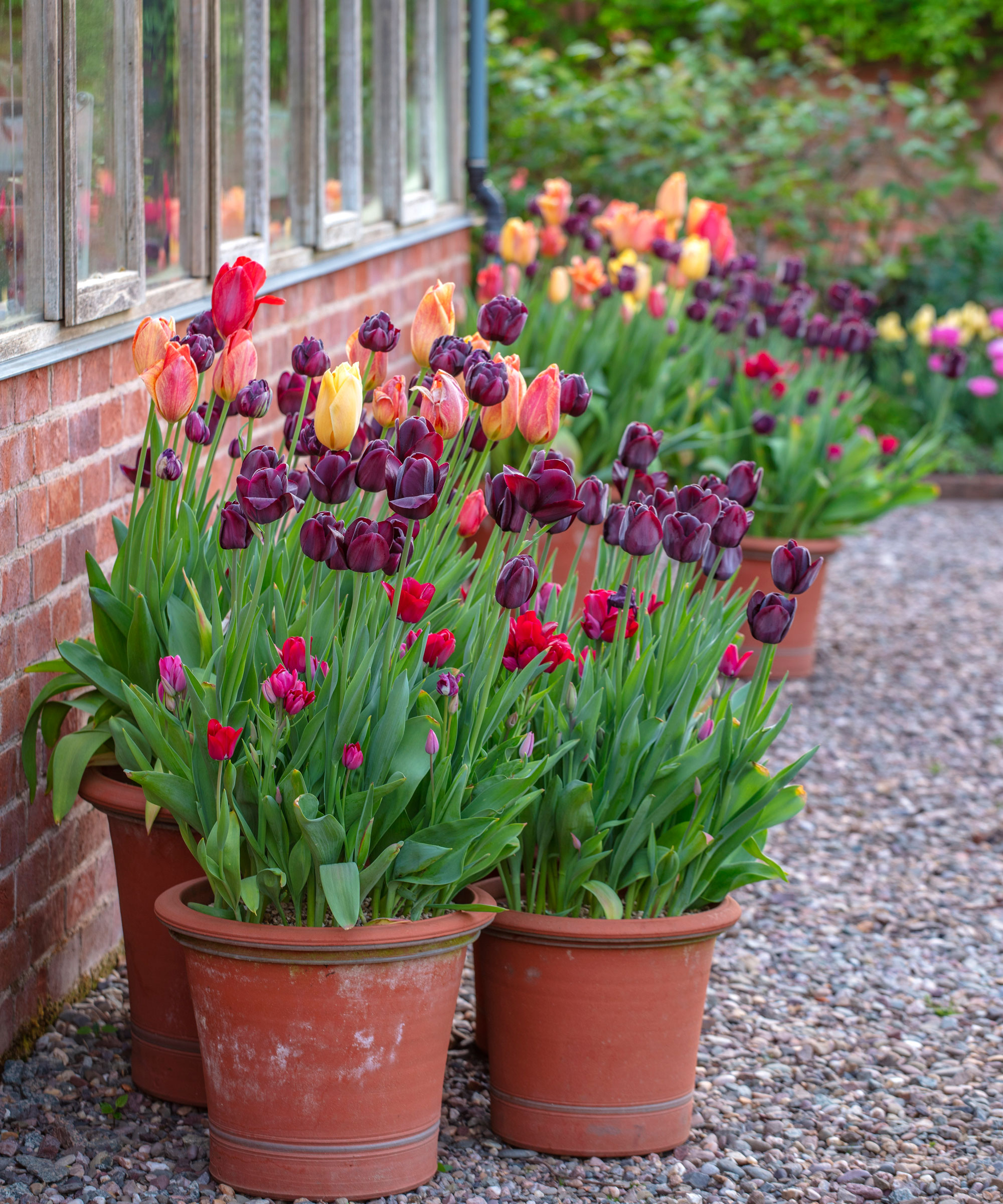
In the Kitchen Garden, terracotta pots are planted with a single tulip type then grouped together to create a border effect
In the adjoining Kitchen Garden, ahead of the edibles, the perimeter beds and grouped terracotta pots burst with color. They follow the path of the sun; a spectacular fusion of sunrise colours flushes the eastern beds, pitted against a striking bonfire of sunset flames in the west. ‘
The arrangements are simpler than the South Garden’s matrix, 1,500 bulbs with fewer varieties, but colour intensity compensates for reduced density,' says Anne.
5 Arrange in classical height order
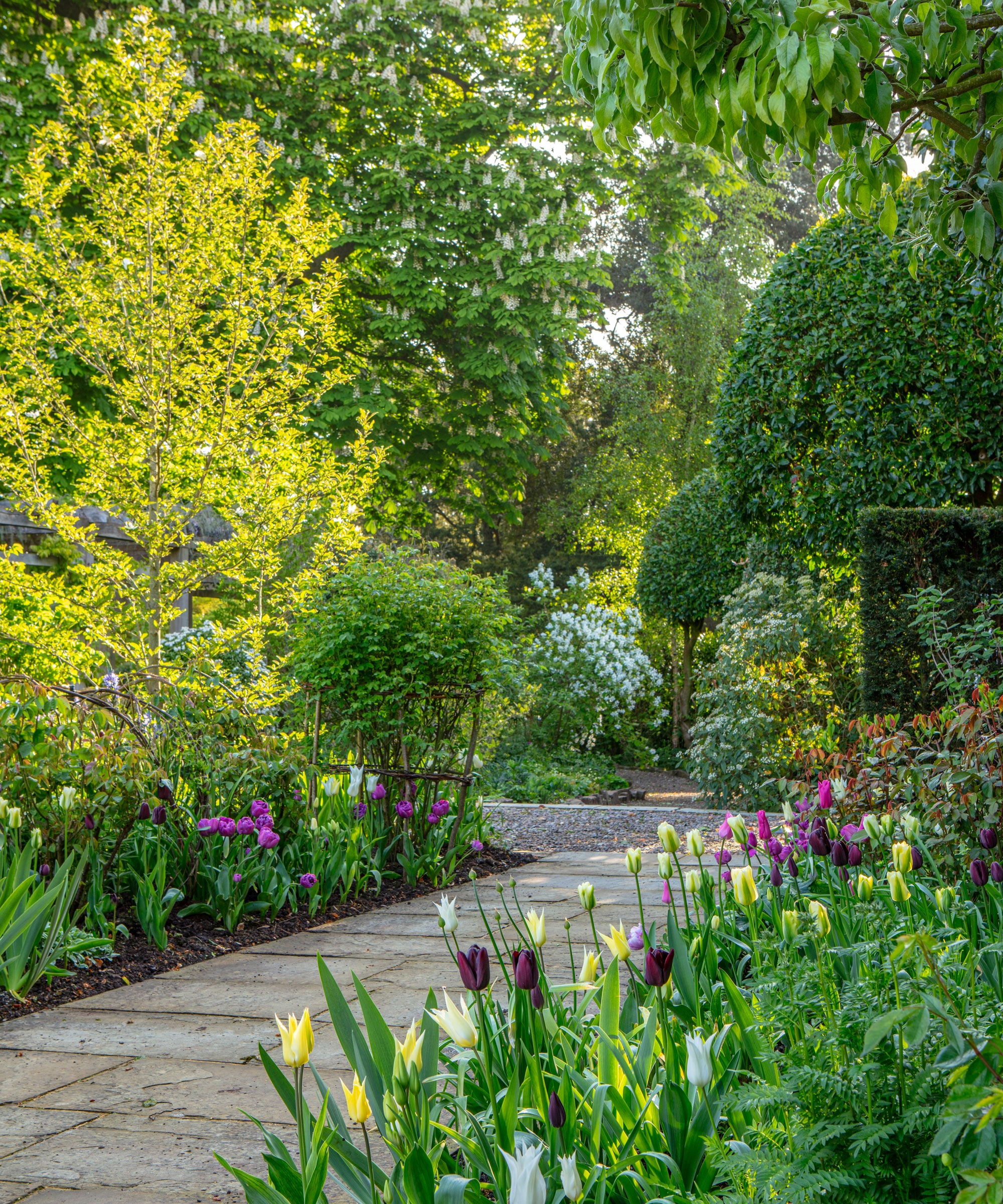
A pathway sweeps through concentrated borders that are planted with pink, lemon, white and black tulips
Tulips are systematically arranged in classical height order, ‘short to the front, taller to the back, with subtle mingling of changeover heights creating movement and avoiding awkward, soldier-like rows’.
The spring garden planting is meticulously orchestrated, but in the past the effect has been ‘ruined by substitute or rogue bulbs’. A partnership with Bloms Bulbs resolved such issues and, in 2019, led to the first annual Tulip Festival.
See: Garden jobs for May – what to do, seeds to sow, and flowers to plant
Anne plans the gardens while Bloms provide an assortment of ‘weird and wonderful’ tulips for the cutting-garden, and bring armfuls of cut-blooms to display in the Orangery. ‘It’s so important to see tulips in the flesh,’ enthuses Anne, delighted to share her finely-tuned kaleidoscope of glorious color with visitors.
Interview by Jacky Hobbs
Sign up to the Homes & Gardens newsletter
Design expertise in your inbox – from inspiring decorating ideas and beautiful celebrity homes to practical gardening advice and shopping round-ups.
With over 30 years of working in journalism on women's home and lifestyle media brands, Rhoda is an Editorial Director, Homes Content, at Future. Over time, Rhoda has worked on the entire homes and gardens portfolio including Homes & Gardens, Country Homes & Interiors, Livingetc, Ideal Home, Style at Home, Woman & Home, 25 Beautiful Homes, Amateur Gardening and Easy Gardens. She was also editor of Country Homes & Interiors for 14 years, leading it across print and creating the blog Country Days. She has also worked at Woman’s Weekly, Family Circle and Practical Parenting.
-
 Everyone is obsessed with vintage tiles right now – bring the nostalgic charm of this classic design feature into your home with our 5 design ideas
Everyone is obsessed with vintage tiles right now – bring the nostalgic charm of this classic design feature into your home with our 5 design ideasHonor the past with our favorite ways to decorate with vintage tiles, as suggested by interior design experts
By Eleanor Richardson Published
-
 'It's a fast reset button' – using the 1, 2 ,3 ,4, 5 decluttering method cleared my persistent mess in seconds
'It's a fast reset button' – using the 1, 2 ,3 ,4, 5 decluttering method cleared my persistent mess in secondsIt's easy, effective and so quick to do
By Ottilie Blackhall Published